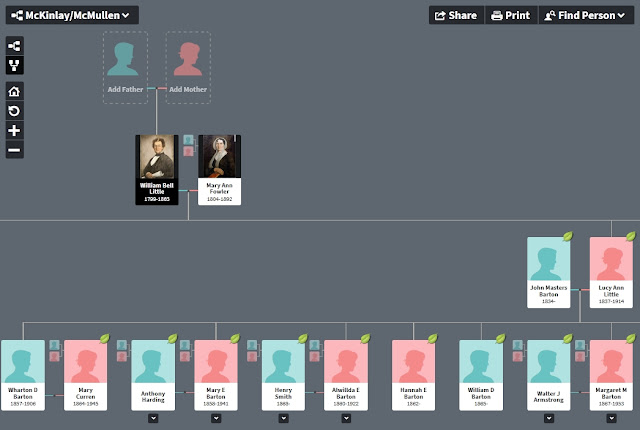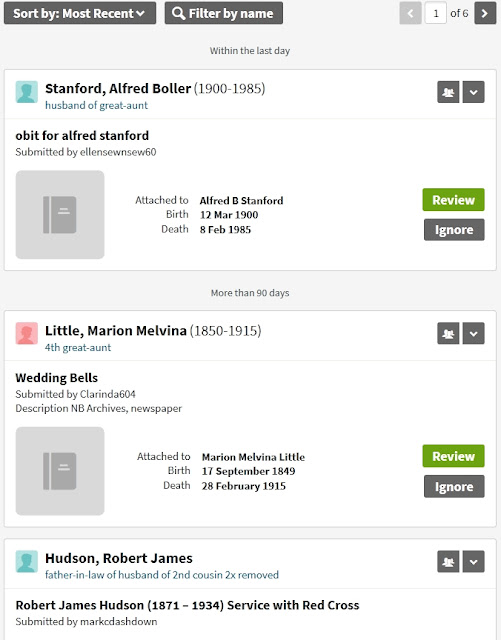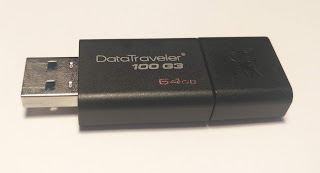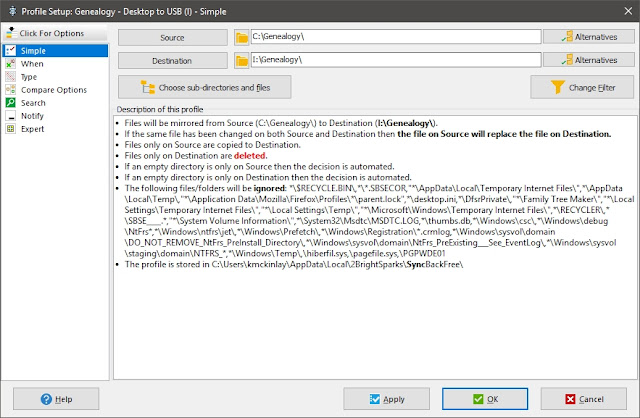"The Member Trees are a special challenge for me since I don't trust anyone's trees (sometimes I even doubt my own work). My usually approach for the member trees on Ancestry is to do a quick glance at what they have posted to see if there is anything of particular interest and then review those documents. Sometimes I will add to my to do list an action to search for a document to confirm what someone added to their tree."
For me, the Member Trees hints fall under my first rule of my genealogy research of "Trust no one"1
As I start to write this post I have 739 Member Trees hints. That is down from 846 from last week when I decided I really needed to clean up the non-record hints in my Ancestry tree. By reviewing those hints I've created 10 to do items from information I gleaned from the various member page hints. I've also sent to a message to two Ancestry members concerning a possible incorrect marriage fact in their respective trees.
First of all, when going through the Member Trees hints I would recommend starting at the oldest hint. Why? A few reasons:
- The oldest hints are usually about the people you first added to your tree. These are often the people of most interest to you.
- It also can give you a sense of accomplishment as you go to the next page of hints and it isn't a never ending list.
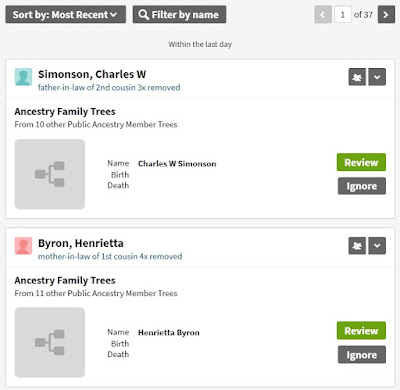 |
| Screen capture from Ancestry Member Trees hints for McKinlay/McMullen tree |
As you can see by the screen capture I have 37 pages of hints with 20 people per page. To quickly go to the last page I just type in 37 in the page number box and press the Enter key.
Next I Ignore the hints of people that, according to Ancestry, are not a spouse of a blood related family member or someone not related to me through blood. Back when I started working on my third version3 of documenting my family tree I was still in the "name collecting phase" that most of us go through when we start researching. In the current iteration of my tree I am a bit more focused on the connections I record. So when I see a Member Trees hint for someone like Jean Brannan that states she is the "mother-in-law of wife of 2nd cousin 3x removed" that is usually a quick decision to ignore the hint. However, even then I might click on the Review button.
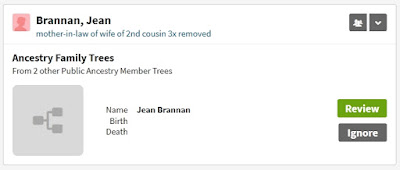 |
| Screen capture from Ancestry Member Trees hints for Jean Brannan |
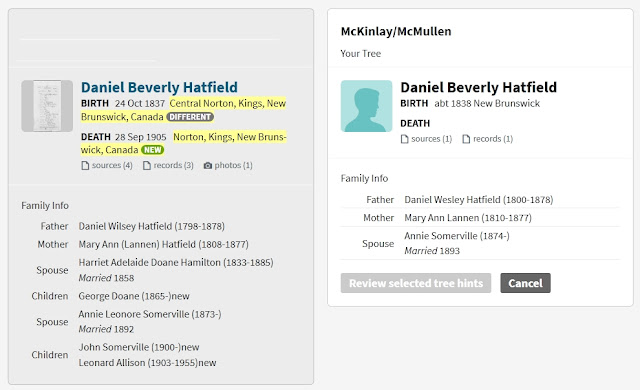 |
| Screen capture from a specific Ancestry Member Tree hint for Daniel Beverly Hatfield |
As you can see, there is much more information for his family than what I have including a possible first marriage and a list of children. There is even a death date in that suggested tree.
Notice that there is a difference in the date for the marriage to Annie Somerville. This raises a flag for me. Is my information incorrect? Since my master database is not on Ancestry but stored in my offline Legacy Family Tree I need to consult the source or sources I've used. If it is only single source I need to see if I can find a corroborating source for what I have. Of course, I might be in error4.
In this case, my source of the date of the marriage to Annie Somerville is from "The Records of The Reverend James Gray, Kings County, New Brunswick 1857-1898" compiled by Graeme F. Somerville.
Date of Marriage: 1893 Feby 8
No of License: 10875 (house of J Gray)
Parties Married and Residence: D. Beverly Hatfield, age 55 Ch. of England Farmer, Norton / Annie Somerville, 19, Baptist, Norton
Names of their Parents: Daniel Hatfield, Mary Lannen / John Somerville, Gertrude Belding
Witnesses and their address: Jane Gray, Sussex / Bella M. Patterson, Sussex
However that book is an extract from the original records. Might there be another set of records I can check to verify the date?
The first place I went to is the "Daniel F Johnson's New Brunswick Newspaper Vital Statistics" collection at the Provincial Archives of New Brunswick site. There, in volume 85 number 1421, from the 3 Mar 1893 edition of the Kings County Record of Sussex in Kings County Daniel has extracted:
"Norton (Kings Co.) March 1 - D.B. HATFIELD, our police magistrate, took to himself a wife about two weeks ago, in the person of Miss Annie SOMERVILLE, eldest d/o John SOMERVILLE, section foreman."
But that is still an extract. Can we find an image of a civil or parish record?
In the Vital Statistics from Government Records (RS141) at the Provincial Archives of New Brunswick site there can be found the 8 Feb 1893 marriage record for D. Beverley Hatfield5 and Annie Sommerville. So it seems like my information is correct.
What about that possible first marriage? Can we confirm that information?
With that marriage taking place prior to civil registration a search of the Vital Statistics from Government Records is probably futile but since it takes just a minute to do I did it anyways just in case. Nothing was returned using the following criteria:
- Family Name exactly hatfield
- Given Names begins with d
- Years 1850-1860
- County All Counties
21 Aug 1858 New Brunswick Courier (Saint John, New Brunswick): "m. 26th July, by Rev. W. Alves, D.B. HATFIELD, Norton parish (Kings Co.) / H.A. Hamilton DOANE fourth d/o Capt. Isaac DOANE of (St. John) city."and
27 Aug 1858 Religious Intelligencer (Saint John, New Brunswick): "m. 26th July, by Rev. W. Alves, D.B. HATFIELD, Norton parish (Kings Co.) / H.A. Hamilton fourth s/o Capt. Isaac DOANE (St. John)"
Hmmm...it appears that her last name isn't Hamilton but is Doane.
What about her death? Is that correct? Back to the DFJ collection and a search for the last name of Hatfield and a forename starting with "D" (the husband is often mentioned in notices of that time). I do find two notices for Adelaide Hatfield for a death taking place in Norton, Kings County, New Brunswick on 5 March 1887. She is recorded as the wife of D. Beverley Hatfield and daughter of the late Captain J.W. Doane.
d. Norton (Kings Co.) 5th inst., Adelaide HATFIELD w/o D. Beverley HATFIELD, Esq. and d/o late Capt. J.W. DOANE, age 53 (Boston, New York and Chicago papers please copy)J.W. Doane and not Isaac Doane. Sigh, yet another mystery for another day. Also with a request for other newspapers to copy I wonder if there might be family members in those other places.
However, it appears that the information presented for the family of Daniel Beverly Hatfield from this specific public tree on Ancestry is suspect. But I did find clues to work from and records to confirm.
As an aside, just verifying these details took under 30 minutes since I knew where to search. It will take me about an hour to record the details in my master offline family tree database and to make the additions to my Ancestry tree.
The one thing I will never do is just blindly accept those hints from another tree into my own tree.
Keep in mind that an ignored hint can always been viewed by selecting Hints and clicking on "Ignored".
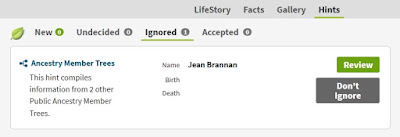 |
| Screen capture from Ancestry for Ignored hints of Jean Brannan in McKinlay/McMullen tree |
When doing the hint clean ups from the Ancestry Member Trees, keep in mind that it will take some time. It isn't a simple process and you will always end up with to do items and a lot of data entry. But it is worth it in the end.
1. I try to follow three basic rules in my research:
1. Trust no one2. See my posts Zombie in the census? about Robert Howe and also Endnotes and Footnotes concerning the grave maker for Elizabeth (nee Chipman) Sommerville.
2. Verify everything
3. Even if written in stone it might be wrong2
3. I'm currently on my fifth version of the tree as part of my long term "do over" project.
4. Yes, I make mistakes. Sometimes they are whoppers but often they are simple transcription errors.
5. The marriage registration states "D. Beverley Hatfield" but the marriage certificate has his signature written as "D. Beverly Hatfield".
